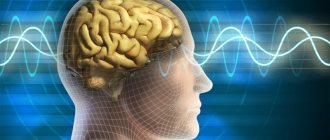Depending on the functions and individual characteristics, psychology distinguishes different types of memory in humans. Each differs in scope, activity, goal setting and involvement of other cognitive processes. The development of some occurs naturally, during growing up. The formation of others occurs especially intensively at a certain part of the life path. But most still require constant training. Therefore, it is important to know the characteristic features of each of them.
Figurative memory
Figurative memory is a repository of sounds, smells, and visual ideas. Visual-figurative memory stores material in the form of visual, auditory and other images. Therefore, several separate types of figurative memory are distinguished, such as auditory (try to remember the purring of a kitten or the crackling of brushes in a fire), visual figurative memory (the face of a loved one or a favorite vase - remember?), olfactory (the smell of a familiar perfume or just freshly cut grass), tactile (the touch of a warm hand or the pain of an injection), taste (the sourness of a slice of lemon or the sweetness of a banana). Visual-figurative memory is especially important in creative activity.
Our brain prefers to perceive the world by processing information in both hemispheres: the right one perceives the image, and the left one selects words for it. By developing figurative memory, we fill the gap caused by the lack of images: in the modern world there is a lot of information, but the bulk of it does not involve the right hemisphere in its work, an imbalance arises, as a result of which it is increasingly difficult for us to remember, maintain attention, and concentrate. The development of figurative memory helps to engage the right hemisphere, using the imagination. By imagining, we remember easily. Having understood the material, we create an image that consolidates understanding and gain knowledge.
There are visual, auditory, motor-auditory memory, visual-motor-auditory memory. These are the types of so-called sensory memory that play the most important role in learning. Knowing what type of memory predominates in a student, you can take a differentiated approach to the process of his learning, achieving better memorization results. The teacher must ensure that as many senses as possible participate in the process of learning the material. At one time, the famous teacher K.D. drew attention to this. Ushinsky.
Human memory in psychology
Human memory has always been the object of close attention of scientists. Initially this concept was philosophical. Later it began to be classified as psychology. Today, memory mechanisms are studied by such sciences as physiology, biology, and mathematics. Research by scientists gives rise to various theories and hypotheses.
Thanks to different types of memory, a person recognizes the faces of relatives and friends, studies and works, plays sports, and drives a car. Without the ability to remember and retain necessary information, any activity would be impossible, even to satisfy basic needs. It is impossible to overestimate the role of memory in human life.
Its most important property, volume, shows capabilities that have large individual differences. The degree of memory development depends on a number of external and internal factors:
- genetic characteristics;
- state of mental and physical health;
- lifestyle and characteristics;
- upbringing and education.
In psychology, there are many types of memory, each of which is of great importance for the development of human abilities.
Visual memory
Visual memory is associated with the storage and reproduction of visual images. Visual figurative memory involves the use of a visual analyzer to process information. For many people, visual figurative memory represents the main type of memorization.
The development of visual memory is especially important for artists, but we all use it widely. By developing imagination, we also help the development of visual memory, because what we imagine is easier for us to remember and reproduce.
Physiological mechanism of memory
H. Hiden's conjecture
One of the widespread chemical theories of memory is Hiden's hypothesis about the protein nature of memory. He came to the conclusion that the RNA of brain cells is associated with memory, i.e. The memory mechanism is a change in RNA structure.
The information underlying long-term memory is encoded and recorded in the structure of the polynucleotide chain of the molecule (an RNA molecule is built from one polynucleotide chain, two polynucleotide chains form a DNA molecule). The different structure of impulse potentials, in which certain sensory information is encoded in afferent nerve conductors, leads to different rearrangements of the RNA molecule, to movements of nucleotides in their chain that are specific for each signal. In this way, each signal is fixed in the form of a specific imprint in the structure of the RNA molecule.
Based on Hiden's hypothesis, it can be assumed that glial cells are included in the metabolic cycle of encoding incoming signals by changing the nucleotide composition of synthesizing RNAs. The entire set of possible permutations and combinations of nucleotide elements makes it possible to record a huge amount of information in the structure of an RNA molecule: the theoretically calculated volume of this information is 10-1020 bits, which significantly exceeds the actual volume of human memory.
The process of fixing information in a nerve cell is reflected in the synthesis of a protein, into the molecule of which the corresponding trace imprint of changes in the RNA molecule is introduced. In this case, the protein molecule becomes sensitive to a specific pattern of the impulse flow, thereby it seems to recognize the afferent signal that is encoded in this impulse pattern (scheme). As a result, the mediator is released at the corresponding synapse, leading to the transfer of information from one nerve cell to another in the system of neurons responsible for recording, storing and reproducing information.
Mechanism of short-term memory
The structures of the hippocampus and limbic system of the brain are involved in short-term memory. This is due to the implementation by these nerve formations of the function of distinguishing the novelty of signals and reading incoming afferent information at the input of the waking brain. The implementation of the phenomenon of short-term memory practically does not require and is not really associated with significant chemical and structural changes in neurons and synapses, since the corresponding changes in the synthesis of messenger (messenger) RNA require more time.
Despite the differences in hypotheses and theories about the nature of short-term memory, their initial premise is the occurrence of short-term reversible changes in the physicochemical properties of the membrane, as well as the dynamics of transmitters in synapses. Ionic currents across the membrane, combined with transient metabolic shifts during synaptic activation, can result in changes in synaptic transmission efficiency lasting several seconds.
Mechanism of long-term memory
The transformation of short-term memory into long-term memory (memory consolidation) is generally due to the onset of persistent changes in synaptic conductivity as a result of repeated excitation of nerve cells. Memory consolidation is caused by chemical and structural changes in the corresponding nerve formations. According to modern neurophysiology and neurochemistry, long-term (long-term) memory is based on complex chemical processes of the synthesis of protein molecules in brain cells.
Of certain importance in the mechanisms of long-term memory are the changes observed in the mediator mechanisms that ensure the process of chemical transfer of excitation from one nerve cell to another. Plastic chemical changes in synaptic structures are based on the interaction of mediators, for example acetylcholine, with receptor proteins of the postsynaptic membrane and ions (Na+, K+, Ca2+). The dynamics of transmembrane currents of these ions makes the membrane more sensitive to the action of mediators. It has been established that the learning process is accompanied by an increase in the activity of the enzyme cholinesterase, which destroys acetylcholine, and substances that suppress the action of cholinesterase cause significant memory impairment.
A possible basis for long-term memory are some hormonal peptides, simple protein substances, and the specific protein S-100. Such peptides, which stimulate, for example, the conditioned reflex learning mechanism, include some hormones (ACTH, somatotropic hormone, vasopressin, etc.).
Motor memory
Motor memory retains everything related to motor activity. It’s as if the arms and legs themselves “remember” what to do.
Motor memory helps us remember movements and then reproduce them. Thanks to her, we learn dances, work with instruments, ride a bike, etc.
The development of motor memory is promoted not only by the refinement of movements, accuracy, and dexterity. Without it, it is simply impossible to achieve success in any business, no matter what we undertake. It underlies the skills of walking, riding, writing, and all work and practical skills. If we did not have this memory, we would be forced to learn to repeat this or that action. The more familiar the conditions, the more accurate and precise the movements, the better the result.
Usually one type of memory predominates, but there are also mixed and combined ones. Thus, motor-auditory memory and visual-motor-auditory memory belong to combined types of memory.
Introduction
To be productive, aware, and feel good both physically and emotionally, we need a good memory. After all, how will we fulfill our duties if we forget a lot of things? For development and advancement, we simply need to be able to not only capture information in different ways, but also store it in order to use it at the right time. Otherwise, we would be like babies, or, according to the myth, like fish that can only remember something for 3-4 seconds. It has many faces, so you should definitely add an adjective that explains its focus and type, and is also unique, because, in fact, with its help we can connect the past, present and future together.
Verbal-logical memory
The verbal-logical type of memory stores information in the form of verbal concepts and numbers. It is responsible for meaning, logic, interaction between elements of verbal information . In the learning process, both figurative and verbal-logical memory are widely used. Figurative memory is inextricably linked with imagination and is in demand in many areas of human life.
We use the verbal-logical type of memory all the time. When we study new material, it is mainly she who works. The development of all other types of memory in a person also depends on the development of verbal-logical memory: it relies on them and plays a leading role in the assimilation of new knowledge.
It is very important to develop the verbal and logical memory of younger schoolchildren, because, as practice shows, if a child does not master the techniques of mental activity and learn to study (forgive the tautology) in the lower grades, then he will fail in the middle and high grades, falling behind in his studies.
The development of verbal and logical memory helps to improve erudition and increase education. The peculiarity of verbal-logical memory is that thoughts do not exist without the participation of language, without words, and neither does their reproduction. We always work with thoughts expressed in words, hence the name - verbal-logical memory.
What types of memory can be developed
Throughout his life, a person uses different types of memory. In the left and right hemispheres, acquired various knowledge is deposited like “bricks”. To extract the necessary information sometimes requires considerable effort. With the help of forgetting, the nervous system is unloaded; this is considered a normal process.
Bad memory and good memory sometimes mean completely different things.
For some, it is important to remember everyday trifles, for others, people and events, and others are interested in the amount of information before an exam or an important presentation. Therefore, it is important to know what kind of memory needs to be developed to solve problems
Conventionally, it is customary to distinguish between two types:
- Natural memory. It is as it is, and is inherent in nature itself. Everyone uses it without exception.
- Artificial. It must be trained and developed throughout life.
There are people with phenomenal memory. Others can't hold anything in their head for more than a minute. Experts are confident that the ability to remember can be trained and developed, just like your own body. If you take this seriously, you can achieve significant success.
Memory Features
Causes of memory impairment and increased forgetfulness:
- age-related changes;
- Alzheimer's disease and some other diseases;
- lack of water in the body;
- absent-mindedness;
- bad dream.
Memory development has a positive effect on a person’s abilities. For adults, this process is more difficult, since regular training is not needed in monotonous work and everyday life.
Useful qualities to improve the memorization process:
- attentiveness and observation;
- interest in life, positive attitude;
- organization in everyday life;
- use of imaginative thinking;
- learning foreign languages;
- Reading books;
- memorizing poems and quotes;
- Mind games;
- physical exercise;
- proper nutrition;
- the ability to correctly express your memories;
- reflections before going to bed about the past day, listing tasks for the next.
If you follow the advice and recommendations of experts and know the characteristics of human memory, then its comprehensive development is possible. Developed memory is valued and helps to achieve a high position in society
This is also important for successful work in all areas
Emotional memory
Emotional memory contains all memories of experienced emotions and feelings. A feature of emotional memory is its brightness even after many years after the emotional outburst received. Usually, supported by an emotional impulse, it stores information for a long time and firmly. This may be due to the fact that, under the influence of strong emotions, adrenal hormones are included in the memorization mechanism, which are not involved in normal memorization.
Sometimes primary emotions are replaced by secondary ones, sometimes opposite ones, and then we overestimate our attitude towards events that once took place.
The development of the emotional type of memory helps to increase a person’s intellectual potential. Both success and comfortable emotional state in the family and society depend on the development of emotional memory. Works of art, wildlife, and fiction stimulate the development of imaginative thinking, which also contributes to the development of emotional memory.
Functions of emotional memory:
- Accumulation and reproduction of emotional experience associated with the event that caused the emotion.
- Formation of emotional intelligence.
- Influence on the development of personality and its creative abilities.
Through memory for emotional states, we make decisions about our next steps, we have the opportunity to learn from our mistakes and repeat successful experiences. The functions of emotional memory make its contribution to the formation of personality very significant.
Thanks to the emotional type of memory, we know how to suffer, rejoice, and sympathize. Once experienced feelings hold us back from something, encourage us to do something. Emotions are involved in the mechanism that motivates us to action. It is not thinking, but emotions that charge us with energy.
Theories of memory
- Physiological approach – theory of neural models. Neuron – synapse – neuron.
- Biochemical approach – 2 stages of memorization:
- Reversible electrochemical reaction
- Irreversible biochemical reaction
Long-term storage is the cerebral cortex. The hippocampi - S - shaped formations inside the hemispheres, process new information and send it for permanent storage.
Psychological approach - associative theory: by similarity, by complexity, by contrast. Gestalt theory (the material appears in the form of a holistic structure, and not a random set of elements). Face.
Activity approach (the effectiveness of memorization is determined by the significance of the material for the individual’s activities
-Declarative - contains information about the world: Pushkin the poet, is ensured by the functioning of the cerebral cortex.
-Procedural - various movements, actions that we can perform: writing, riding a bicycle.
. Semantic (facts not related to a specific time context, general information).
Episodic (events personally experienced by a person).
Implicit occurs when we are influenced by past experiences without realizing it.
7.2 Explicit - memory that takes place in awareness.
Long-term, short-term and working memory
Based on the time it takes to store information, we distinguish between instant, short-term, operational and long-term memory. Short-term memory is capable of storing information for a very short time, about 40 seconds, and its volume is small, it is 7 plus or minus 2 units of information. This volume can be increased by combining information into blocks.
Most of the information from short-term memory is then erased, and less goes into the so-called working memory. This is facilitated by some factors, such as the emotionality of the presentation, brightness, surprise, unusualness of the material, repeated repetition, and importance for a particular person. Information is stored in RAM for up to a day (maximum), then the less important part is erased, and the more important part goes into long-term memory. Here, information is stored throughout life, and for this the body uses special nucleic acids and memory proteins.
Interestingly, in the slow-wave sleep phase, logical information processing occurs, and in the fast sleep phase, selected information is transferred to long-term memory. You can read more about these processes and the development of long-term memory, as well as the development of short-term memory, in our blog.
General classification
There are a large number of classifications of memory in domestic and foreign psychology. If you need to study this material in detail, you should look at the works of P. P. Blonsky, R. S. Nemov, F. N. Shemyakin, D. O. Hebb and other specialists.
There are only the main types; psychology identifies the following:
In fact, in addition to the main types of memory, descriptions of others can be found in the works of psychologists. For example, the classification according to the nature of mental activity sometimes also includes:
- sensory - visual, when fixation occurs at the moment of blinking;
- eidetic - combined, when visual impressions (which form its basis) are reinforced by others (auditory, gustatory, tactile), which allows subsequently to reproduce an unusually vivid image;
- social - preservation of socially significant information accumulated by previous generations;
- spatial - visual, allowing you to navigate the area well, remembering the features of the route.
The classification by duration is expanded by such a type as ultra-short-term memory (another name is the sensory register) - retaining information for several seconds. Includes iconic (for fixing visual material, lasts less than a second) and echoic (for acoustic, lasts 2 seconds).
Some psychologists classify types of memory into a separate group based on the type of organization of memorization:
- episodic - storage of specific information limited to a certain period (about a concert, for example);
- procedural (automatic) - a way of performing an action without taking into account its content, through skills brought to automaticity (driving skill).
Within each typology, several more species are distinguished. Psychologists are actively engaged in their classification to this day, constantly expanding and improving it.
Involuntary memory and voluntary memory
According to the degree of volitional regulation, a distinction is made between voluntary and involuntary memory.
Involuntary memory is a process that occurs effortlessly, “on its own,” involuntarily. But, as a rule, imprinting in this case is associated with strong emotions, causing, for example, surprise and interest. Material learned using involuntary memory is imprinted better than using voluntary memory, because involuntarily we remember what is in the center of attention, what is interesting, what will definitely be useful, and especially if mental work was associated with it. But it is precisely this information that the brain prefers to send to long-term memory storage.
The development of involuntary memory in preschoolers is associated with their involvement in active interaction with objects, with learning to understand their importance and the ability to divide them into groups. Expanding a child's interests also contributes to the development of involuntary memory.
Voluntary memory is a process in which a person makes volitional efforts to achieve memorization. In this case, when “you don’t want to, but you have to,” we use “tricks”: mnemonics, concentration, motivation; We stimulate and reward ourselves for efforts and successes.
The development of voluntary memory plays a huge role in learning, allowing younger schoolchildren to master the curriculum and promoting general intellectual development, including the ability to think logically and draw conclusions, which is so necessary for high school students. You can read about exercises for developing voluntary memory here:
According to the method of learning, there are two types of voluntary memory: mechanical and semantic.
- When memorizing material by rote learning, without using analysis and transformations, we are talking about the use of mechanical memory.
- When remembering the meaning, and not the form of information, when the material is connected with what is already available and structured, we talk about the use of semantic memory.
But, no matter what type of voluntary memory we use, the result of memorization depends on whether we are able to provide strong, long-term attention to the subject of memorization.
We can say that voluntary memory has features that reflect its specificity.
Random Memory Features:
- Having the intention to retain information in memory.
- Making a certain effort to remember information.
- Using mnemonic devices or other memorization techniques.
- Organized repetition for better memorization.
Memory is one of the most important cognitive functions of the brain, necessary for a full life and human development, and it can and should be trained.
You can train your memory using special memory development exercises. In a fun form of game for this purpose, you can practice on educational brain simulators online.
We wish you success in self-development!
By duration of storage
The amount of stored information is always important for a person of any age.
Why does someone remember facts from the most remote corners of childhood, while others cannot learn their own phone number? It turns out that the matter is not only in abilities, but also in what type of memory is developed in a person. After all, it also differs in the retention time of the material. Depending on the duration of information retention, psychology distinguishes three types of memory.
Operational
Other names: working, intermediate.
Definition in psychology: when a person needs to isolate only the most relevant images and actions from instant perception.
Why is it needed: exclusively for performing specific actions that are necessary only at the moment. As soon as the goal is achieved, the information is immediately forgotten.
Examples: reading and cheating.
Development methods: perform exercises to train attention.
Short term
Other names: short-term, KVP.
Definition in psychology: short-term storage of information after a single short-term perception, when immediate reproduction is required.
Why is it needed: allows the mechanisms of experience accumulation to function fully. The volume and accuracy of long-term memory depends on it. If the information was poorly recorded in the KVP, it will transfer to the DVP deformed.
An example is everyday, routine work (washing dishes in a certain sequence, performing daily tasks according to a schedule), which must be done here and now.
Development methods:
- Use online brain trainers.
- Repeat the same material over and over again for a long time.
- Use the simplification method: break the material into meaningful blocks so that it is easier to remember.
- Master the association method.
- Use the emotional type of memory: to more clearly record an event, remember the feelings that it evokes in you.
Long-term
Other names: long-term, fiberboard.
Definition in psychology: long-term retention of information after repeated repetition and reproduction.
Why is it needed: allows mechanisms for accumulating professional knowledge to fully function.
Kinds:
- Implicit (hidden, unconscious, unconscious) - a person’s reproduction of information from the distant past that seemed to be forgotten. For example, accountants, even after amnesia, remember how to prepare a tax return.
- Explicit (declarative, conscious) - purposeful preservation of existing experience. Corresponds to any type of memory. For example, learn tickets for an oral exam.
Within the framework of explicit LTP, 2 more subtypes are distinguished: episodic (memories from personal experience) and semantic / historical (memorization of general formulas, dates, rules).
Development methods:
Perform special exercises for attention and memory. Master some mnemonics techniques: alphanumeric code, hangers, associations, O'Brien, Shed. Play memory games: Buffet, Top Secret, Blindfold, N-Back, Lost Symbol, Memory Matrix, Drumpad. Learn as many poems and songs by heart as possible. Then move on to prose. Use the methods of Cicero and Aivazovsky. If we take a more expanded classification, then the 3 types of human memory discussed above are supplemented with ultra-short-term
However, its study and description is subject to even more detailed study.
If we take a more expanded classification, then the 3 types of human memory discussed above are supplemented by ultra-short-term memory. However, its study and description is subject to even more detailed study.
There are many types of memory. Detailed classifications are needed primarily by specialists in this field - psychologists. Knowing the smallest nuances, they will be able to more accurately identify violations and select the most effective development methods for each individual case. For an ordinary person, it is enough to know the most basic types in order to independently identify problems and be able to solve them if they do not require deeper and professional correction.
What memory problems occur at different ages and how to stop its deterioration? You can read about this in our separate article.











